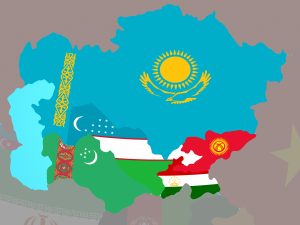The Russian government this week approved an agreement signed back in 2022 on the establishment of a common regional air defense system with Kyrgyzstan. While the agreement has long been in the works, the timing of Moscow’s procedural step has drawn attention, given the war in Ukraine and the precarious neutrality of Central Asia.
On April 10, a decree signed by Russian Prime Minister Mikhail Mishustin was posted to an official Russian government portal. The brief decree, dated April 8, states approval of the agreement that had been signed in Moscow in August 2022, and submits it to the president to put it before the State Duma for ratification.
In July 2022, Russian President Vladimir Putin ordered the country’s defense and foreign ministries to start talks with Kyrgyzstan about a common regional air defense system.
Although Russia and Kyrgyzstan do not share a border, they are both members of the Commonwealth of Independent States (CIS) and within that framework participate in a joint air defense system that was established in 1995. The “regional air defense system” mentioned above is something of an augmentation of the existing system.
Back in 2017, Guy Plopsky wrote for The Diplomat that Russia had “big plans” for the future of the CIS joint air defense system. Plopsky went on:
At present, Moscow is actively engaged in establishing so-called “joint regional air defense systems” under the [joint air defense system] framework. According to the first deputy chief of Russia’s Aerospace Forces, Lieutenant-General Pavel Kurachenko, these joint regional systems will be created “in the Eastern European, Caucasus, and Central Asian regions of collective security.” Speaking to journalists in April 2016, Kurachenko announced that Russia and Belarus had already completed the formation of the first such system in the Eastern European region. Agreements on the creation of two other joint regional air defense systems in the Caucasus and Central Asian regions were signed with Kazakhstan and Armenia in 2013 and 2015, respectively. Talks are now underway with Kyrgyzstan and Tajikistan to ratify an agreement on the establishment of similar systems.
Plopsky went on to outline that while Russia had ambitions with regard to the air defense system, in particular the benefits of closer integration, “There are, however, serious doubts as to whether such regional systems can be successfully implemented in the foreseeable future, given that the air and air defense forces of most [joint air defense system] participants remain in poor shape.”
Kyrgyzstan and Tajikistan, especially, presented significant weaknesses in terms of air defense. A Nezavisimaya Gazeta columnist in 2017 noted that in “Kyrgyzstan and Tajikistan there is no combat fighter aviation” and their “air defense formations are not equipped with effective surface-to-air missile (SAM) systems.” Six years later, the situation is largely the same. The Kyrgyz air force has no combat aircraft, and the Tajik air force reportedly only has four Aero L-39 Albatros jet trainer aircraft.
All the same, Russia and Tajikistan ratified an agreement in 2021 and the agreement with Kyrgyzstan is on its way.
Kyrgyzstan announced in February 2023 the first delivery of Pechora-2 BM surface-to-air missile systems purchased from Belarus. Kyrgyz President Sadyr Japarov remarked that the systems were the first “purchased with budgetary funds” since independence – other SAMS operated by Kyrgyzstan date to the Soviet period.
Kyrgyz Defense Minister Baktybek Bekbolotov said in October 2022, when the deal with Beltechexport was settled, that the systems would be deployed to Batken. The suggested location was no surprise; Bekbolotov’s comments came less than a month after an outbreak of terrible violence on the Kyrgyz-Tajik border in Batken region.
It will take more information regarding capabilities and expectations to fully understand the impact of these agreements. Russia already has forces stationed at bases in both Kyrgyzstan and Tajikistan, with attendant air defense capabilities at those sites and the ability to deploy additional forces as necessary. In the meantime, the progress of the agreement with Kyrgyzstan – at a time when Russia is actively at war with Ukraine and branded a pariah by much of the world – perhaps has greater symbolic value than strategic worth.

































